How to Practice Golf: Are You Setting Yourself Up for Failure by the Way You Practice Golf?29/8/2012
Many golfers are hypnotised on a weekly basis by an illusion that plays out on the TV nearly every week. They watch a telecast of a professional golf tournament somewhere in the world and observe a handful of professional golfers holing putts from all over the green, hitting 300 yard tee-shots into the fairway and deadly accurate iron shots close to the hole, making lots of birdies and very few bogies. It is an illusion. The guy or gal that wins the tournament might have finished twenty under par for four rounds of golf and it seems like they played near flawless golf to achieve their score because virtually every shot you see is a great shot. But its not true. Not even close to true... The Golf TV Puppet Masters  What you’re observing is a manipulation or distortion of the truth. The reality is that they hit plenty of less than desirable shots, but the TV people in their control centre at the tournament venue are directing what you see. So you are entertained in your lounge room with a smorgasbord of great golf shots almost all of the time. Because that’s what they believe you want to see, and that may be true, but this distortion can have serious effects on your golf development. 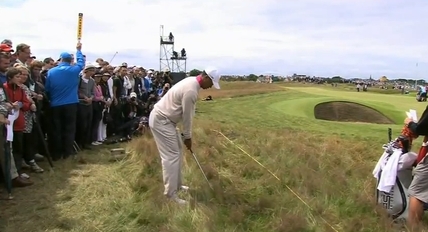 That’s why Tiger Woods is so entertaining and refreshing to watch because on his way to winning golf tournaments you will see him hitting shots from all sorts of ugly places around the golf course. Tiger's scrambling abilities are so well practiced and so good that he makes the recovery shots look very easy. But they're not! They require a lot of practice and this is the key to developing your bounce-back ability. Golf is a Game of Bad Shots Golf is a game of bad golf shots more than it is a game of good shots. That’s why sports psychologist Bob Rotella’s book was titled “Golf is Not a Game of Perfect.” Golf is one of those games that really only suits two types of people; golfers that thrive on challenge and who have a high tolerance threshold for hardship and adversity, and golfers who want to learn how to. If you don’t fit into either of those categories then my best advice is for you to look for another easier game to play because you will not enjoy playing golf. That is the reality of elite level amateur golf and pro tour golf; it’s a tough game that suits tough minded individuals, because the majority of golf shots you will hit will be at times a lot less than you expected and you will need to be able to handle it and not let it affect your progress. 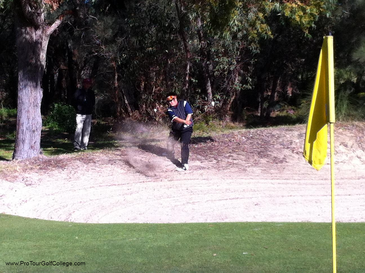 How you handle the constant and never ending challenges you face during a round of golf will determine to a great extent how successful you will be at playing the game of golf competitively. Since most of your golf shots will end up somewhere other than where you want them to you really need to prepare yourself better for it. Golf is one of the few games where you practice usually in a different place to where you perform, and this creates a lot of problems for golfers wanting to lower their golf score average. When you look at a typical driving range or practice fairway you realise pretty quickly that they look very different to golf holes. A golf range is relatively flat in design and wide and the tee area is also flat. The target areas will usually have flags or mounds for you to hit shots to. The driving range is nothing like the design of a golf hole which is designed to challenge you from the tee all the way to the green with narrow fairways, bunkers and sloping greens designed to make you think. Since many elite golfers spend many hours on driving ranges and practice greens honing their golf skills this is a significant contributing factor as to why many golfers fail to make consistent progress. For a start, you spend most of your time practicing shots into a wide catchment area - even though you might be hitting to a flag or something similar. You're unconsciously conditioning your mind to become comfortable hitting to wider target areas, but when you go to the golf course you're confronted with something entirely different. So the way you go about practicing your golf skills away from the golf course could be having a dramatic effect on the way you play. If you practice on perfectly manicured tee's all the time, how can you expect to pull off great recovery shots from tough lies around the golf course. _ Practicing the Tough Shots The truth is you won't pull these shots off if you don't practice them often. I have spent the better part of my adult life observing elite golfers practicing their golf skills in an effort to improve and without exception most (including professional golfers) never spend enough time practicing the tough shots. At Pro Tour Golf College our students practice all the tough shots that you're confronted with in a round so that they can develop their 'bounce back ability.' The bounce back ability is really quite easy to understand as it is the one factor that truly explains Tiger Woods and other leading professional golfers ability to bounce back and win when it looks like they won't. Bounce Back Ability = Practicing Tough Shots More Than Easy Shots  Your bouncing back ability is the confidence that you know that you're still in the game when your golf shots are not flying the way you want them to. Psychologically you have a distinct advantage over your competitors when you compete because you have prepared thoroughly by practicing the challenging shots which will give you the confidence to play them when you have to. It is easier to keep the momentum of your round going when you have developed the scrambling skills that give you far more choices when you get into tough situations off the fairway. In the photo (left) Jason one of the tour players we work with at Pro Tour Golf College is practicing hitting shots through a narrow gap in the trees because he knows that in any round of golf he is likely to get shots similar to this one and he wants to be able to pull the shot off every time. The Good, The Bad and The Ugly... 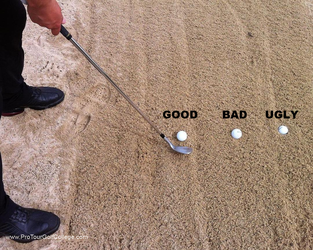 One of the other practice routines that our students work on to develop their skills and confidence is hitting bunker shots that we call "the good, the bad and the ugly." Both David and I have witnessed many elite golfers over the years preferring their ball onto good lies over and over as they practice their bunker shots, and we teach our students that this is a certain recipe for disaster. If you practice bunker shots from perfect lies all the time then how will you bounce back when challenged with a bad or ugly bunker shot? You won't! Good Putters Practice Flat Putts and Great Putters Practice Sidehill Putts  Unless you hole a chip, pitch or wedge shot you will be putting out on every green and many of your putts will be sloping putts. The bottom line in competitive golf is that you will have to hole tough sidehill putts to become competitive, and if you spend the majority of your time practicing putting on level parts of the green you're going to have major problems when you have to hole tricky left to right or right to left putts. The students at Pro Tour Golf College practice sidehill putts everyday using stringlines and putting hoops to ensure that they're as comfortable with these putts as the level ones. We explain to them that when their opportunity comes in a professional tournament to either make the cut, putt to get into a play-off, or putt to win, to expect a sidehill putt. If you want to be develop your bounce-back ability practice lots of sidehill putts when you go to the practice green. Top Professionals Practice the Tough Shots 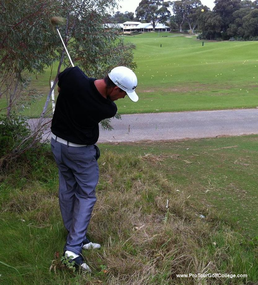 The year that Tiger Woods turned pro 1997 he came to Australia to play in the Australian Open and as I was at the tournament that week I spent some time observing him practicing his shortgame. At one particular point in his practice routine he threw some golf balls into a deep grass bunker and when he addressed each ball he pushed the balls lower into the grass so you could see about ten percent of it. He then proceeded to hit high soft landing shots to a pin close to the edge of the grass bunker and this gave me my first glimpse of his exceptional scrambling skills. Another time I watched Gary Player at a tournament in Paris hitting full shots from divots for half an hour and then at the same tournament I watched Vijay Singh practicing full shots from a downhill slope. This is another area of your game that you should devote time and effort to developing. As I mentioned earlier in this article practicing from level lies on the driving range is going to catch you out when you have to play your shots to a green from trouble lies. Hooks, Slices, High and Low Shots 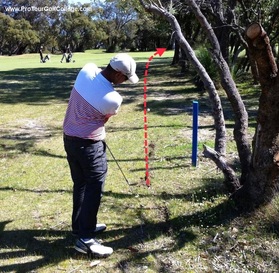 When you miss a fairway you are confronted with a number of options as to what you will do to extricate yourself from the situation. You might have to hit a golf shot with a hook or slice curve, or hit it higher or lower than usual. If you practice hitting straight shots on the driving range most of the time you again will find yourself in a difficult position to bounce back if you cannot competently shape your shots to get you back into play or better. Without exception top class tournament professional golfers are experts at controlling ball-flight and our students practice curving shots into small targets on the range so they are completely confident at playing these important shots when they arise. How about you? Can you hook and slice when you need to?... Golf is a Game Played on Slopes... Today the majority of young elite golfers spend more time on the golf range than they do on the golf course and as a consequence they don't learn to play the game of golf the way it was meant to be played. They are brainwashed into believing that you have to hit long and straight tee-shots and laser accurate irons to become a successful golfers. But this is far from the truth. Golf is not a game of perfect shots, it is a game of imperfect shots played from one side of the golf course to the other. Managing your emotional state requires you to be able to think clearly and make wise decisions at appropriate times in your round. To bounce back from the normal adversity experienced in every round will be easier for you to manage and achieve by devoting more of your available practice time to the trouble shots. Golf is a Game of Trouble Shots  It doesn't matter whether you are an average golfer or a professional golfer; golf by its very nature is a game played over uneven and irregular surfaces. This is one of the unique and endearing aspects of the game of golf and has always been the case. And long before there were golf ranges and practice fairways for golfers to practice and develop their golf skills upon, golfers learned to play the game on the golf course. Do yourself a big favor and play as much golf on the golf course as you can if your goal is to become a top class golfer. And the next time you go to the driving range to practice your golf skills devote at least 25 percent of your available practice time to the trouble shots that you will face in every round, and you will discover that when you're competing and facing some challenging situations, that you will have the confidence and courage to play the shots that can change the direction of your game transforming you into a bounce-back expert. Lawrie Montague and David Milne - Pro Tour Golf College The Professional Golf Tour Training College for Serious Amateur Golfers |
Archives
June 2019
|
Proudly Supported By
Copyright © 2011 - 2018 Pro Tour Golf College
Website Managed By Golf Performance Media
All Rights Reserved
Website Managed By Golf Performance Media
All Rights Reserved



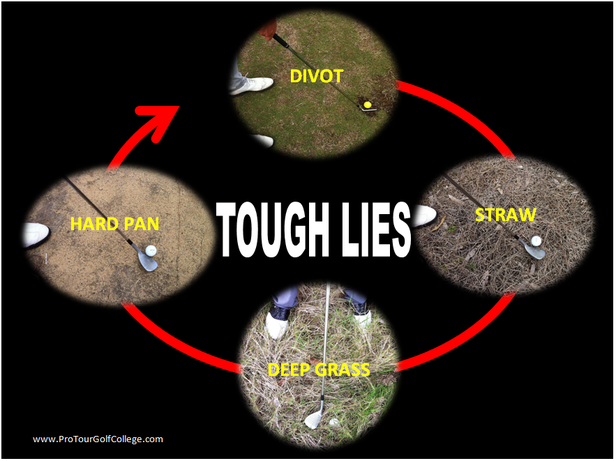


 RSS Feed
RSS Feed



